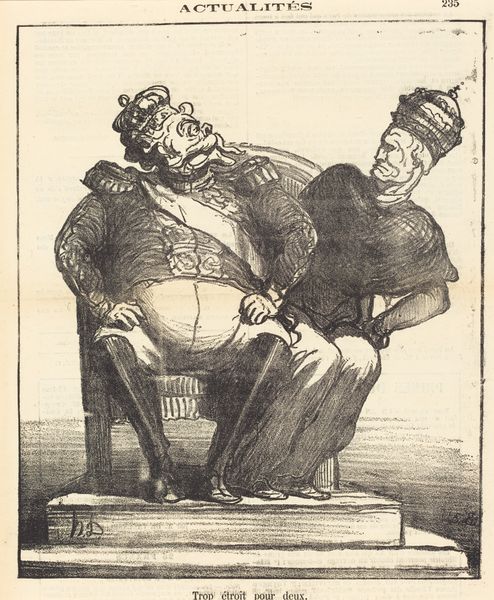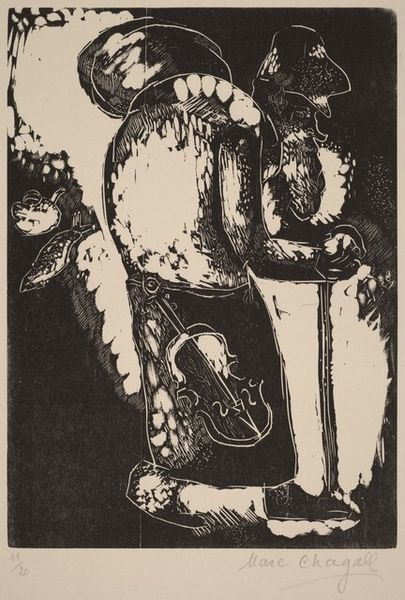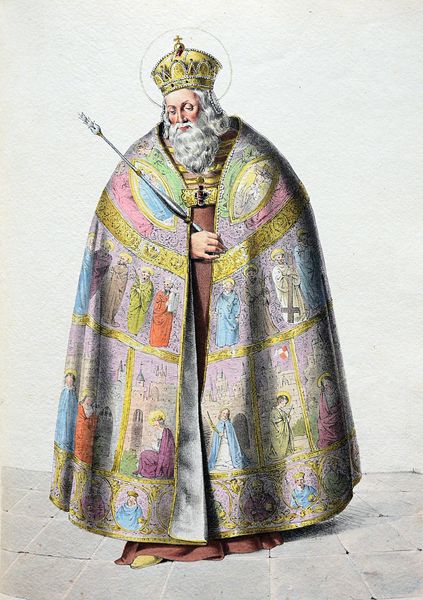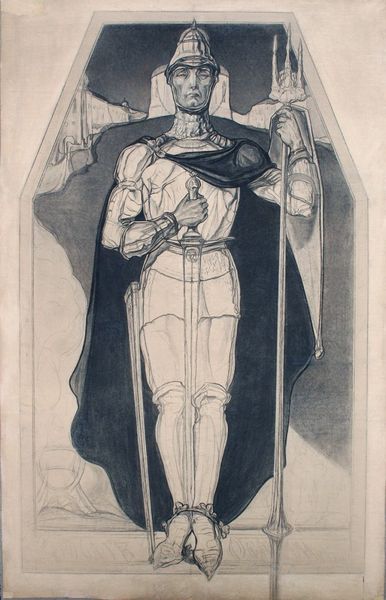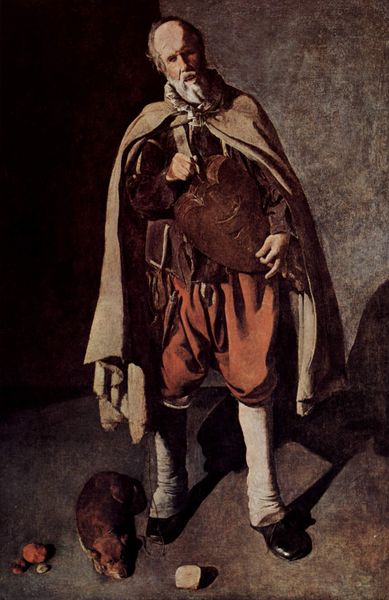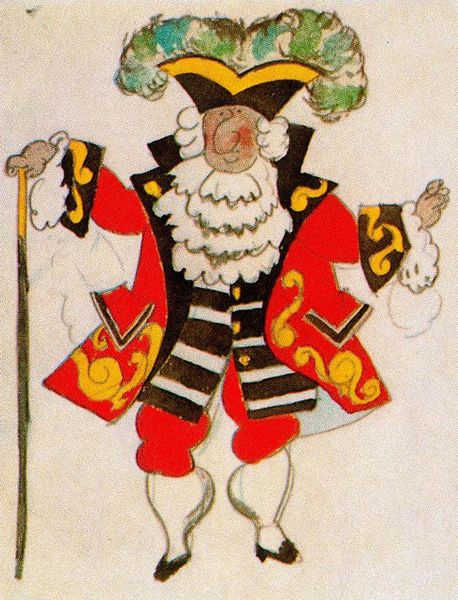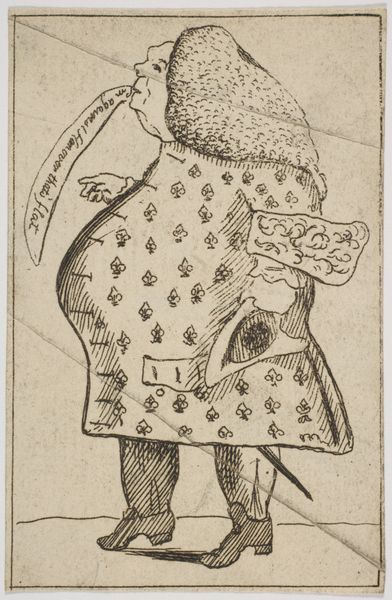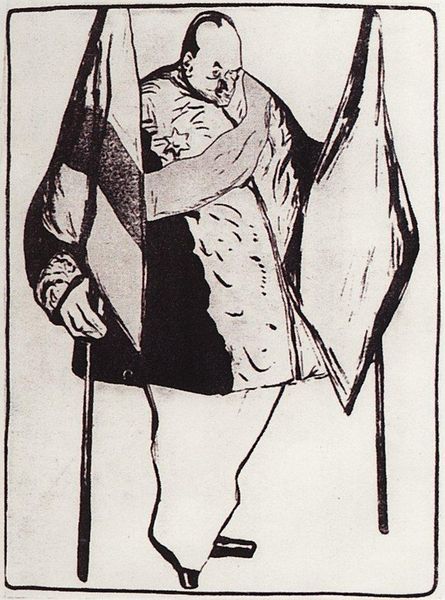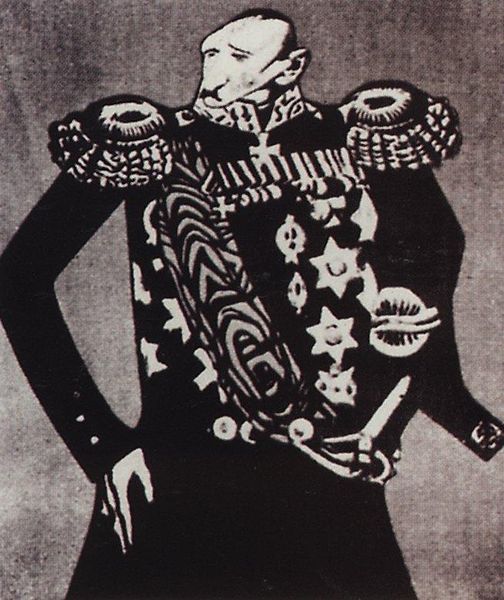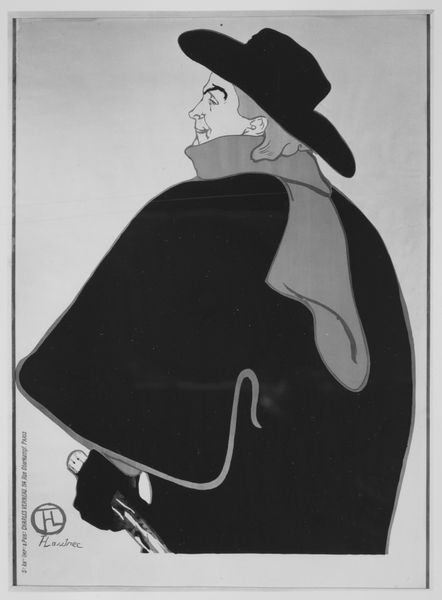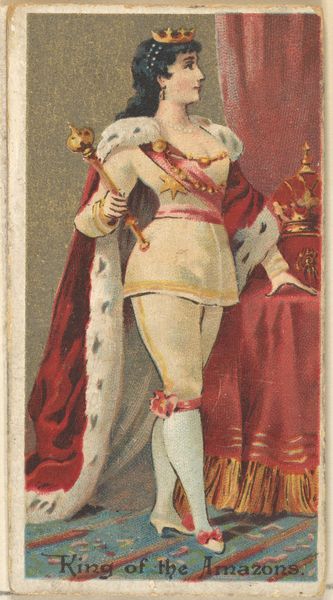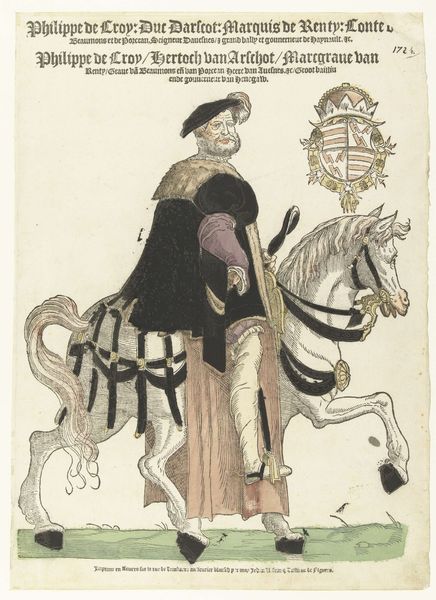
oil-paint
#
portrait
#
caricature
#
oil-paint
#
caricature
#
mural art
#
folk-art
#
romanticism
#
naive art
#
genre-painting
#
portrait art
Copyright: Public domain
Theodor Kittelsen's "King," presents a figure that immediately destabilizes conventional notions of royalty through its formal elements. The king’s exaggerated features, such as his bulbous nose, contrasted against the conventional symbols of power —the crown and ermine-trimmed cloak—evokes both amusement and unease. Kittelsen's composition plays with semiotic codes. The king's casual attire—shirt, suspenders and slippers— clashes against the traditional signifiers of royal status. His hand casually gripping a knife subverts expectations of royal dignity and decorum. This tension extends to the color palette: the bright hues of the cloak and purse set against the darker tones of his clothing create a visual discord, reflecting the character's internal contradictions. The formal construction of the artwork challenges the viewer to question fixed meanings and values. By juxtaposing the ridiculous with the regal, Kittelsen invites us to consider the nature of authority and the potential for subversion within established hierarchies. It's through these formal devices that the artwork opens up a space for ongoing interpretation and cultural critique.
Comments
No comments
Be the first to comment and join the conversation on the ultimate creative platform.
